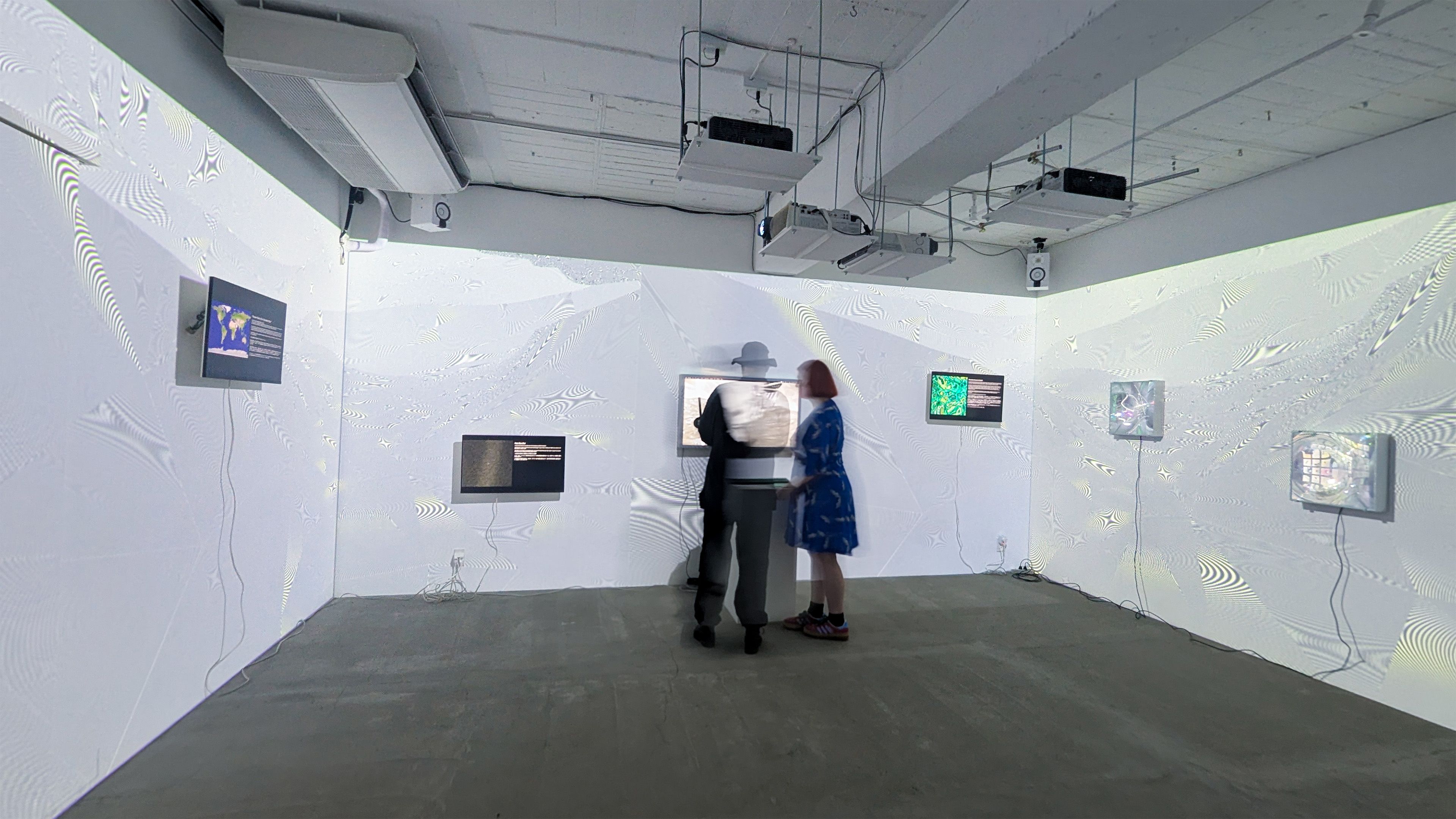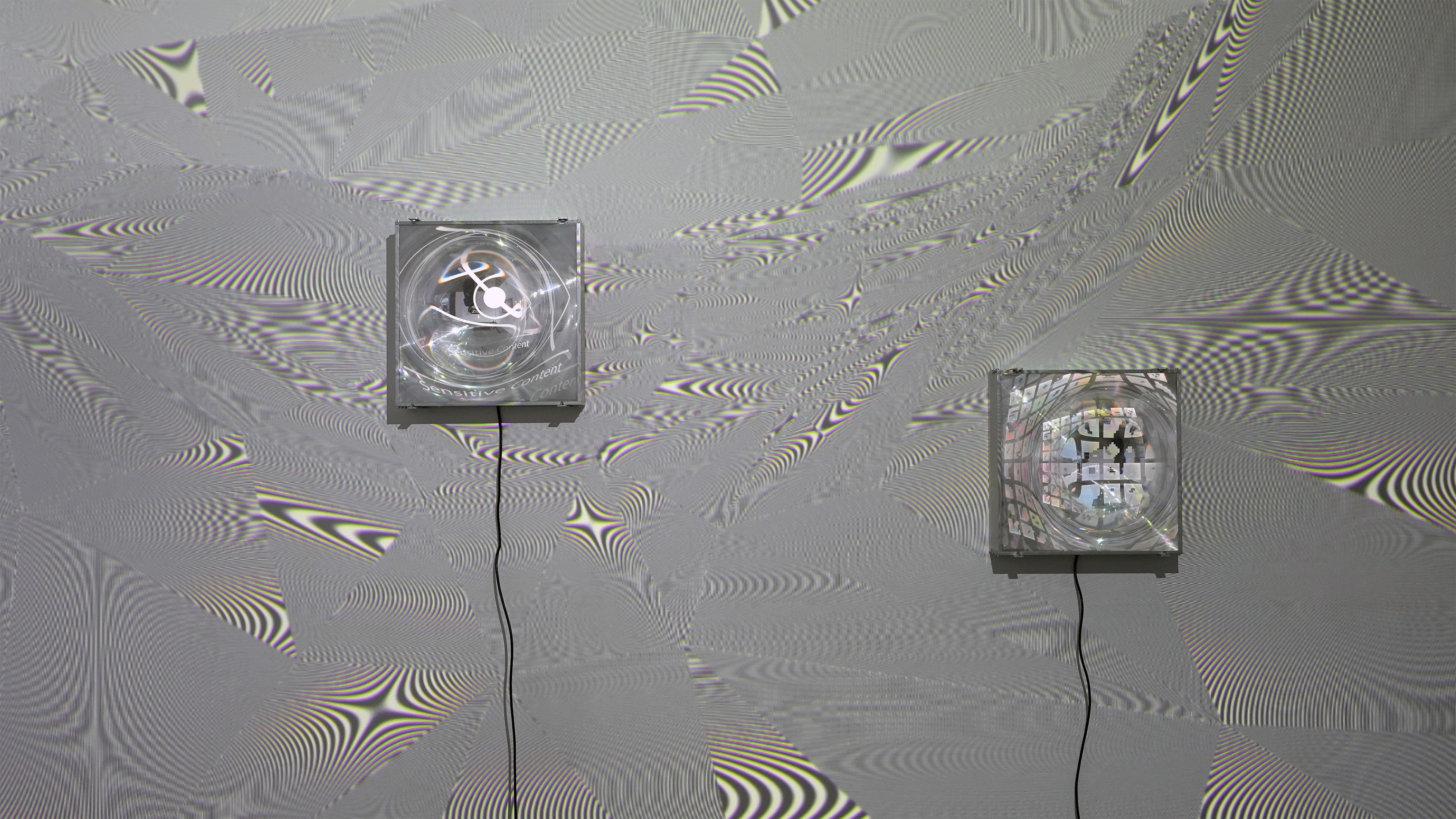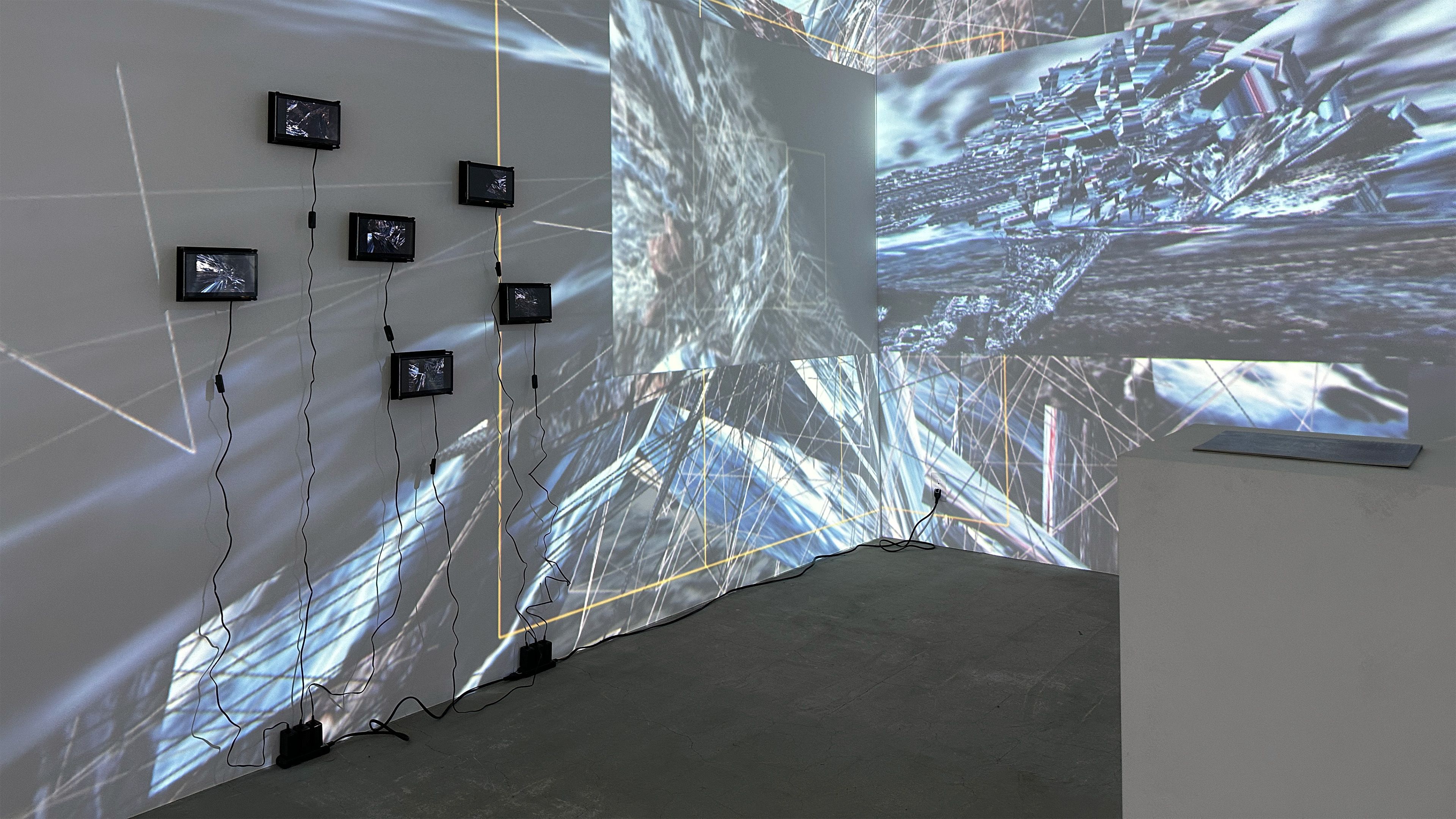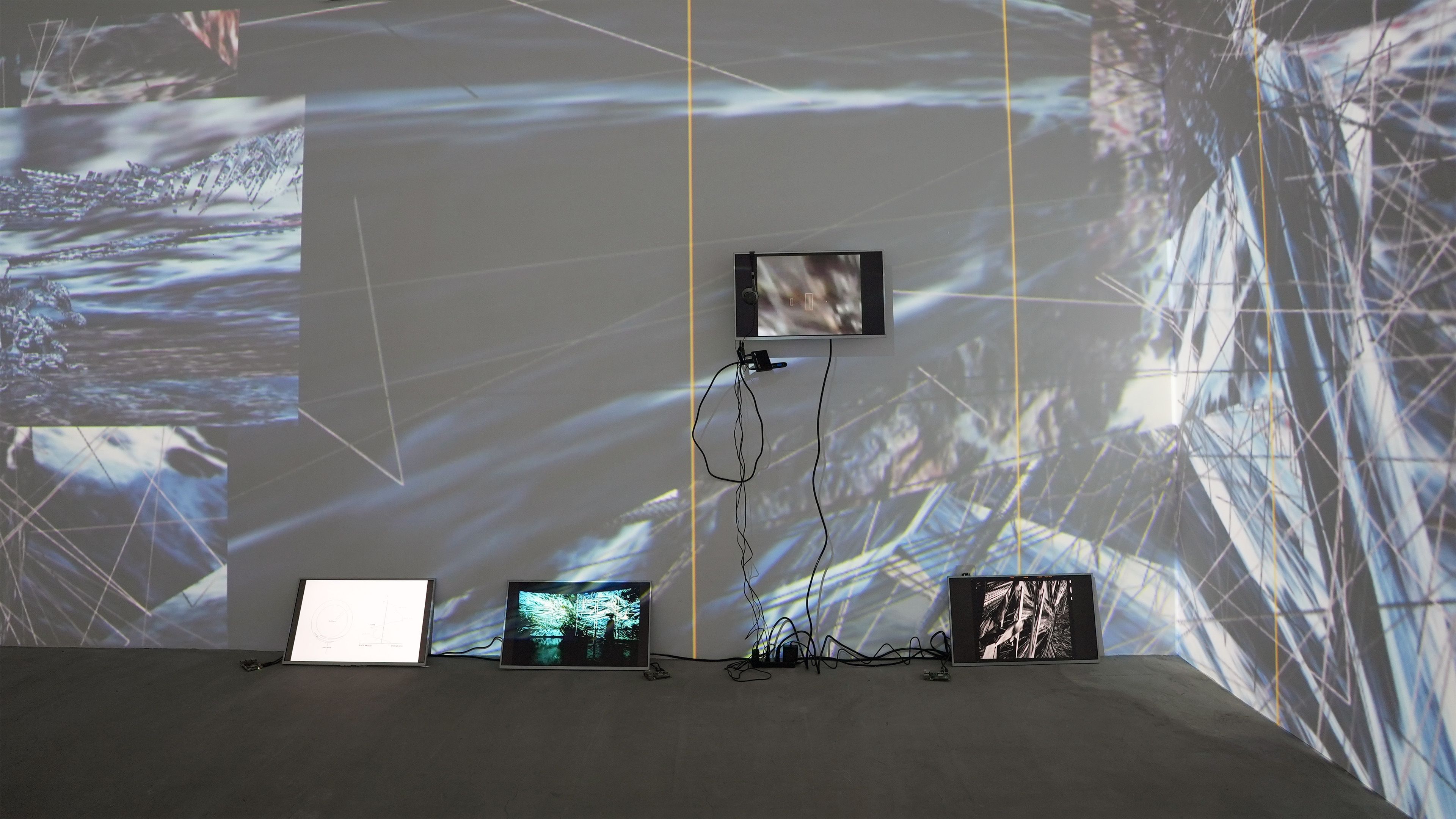Image as Interface
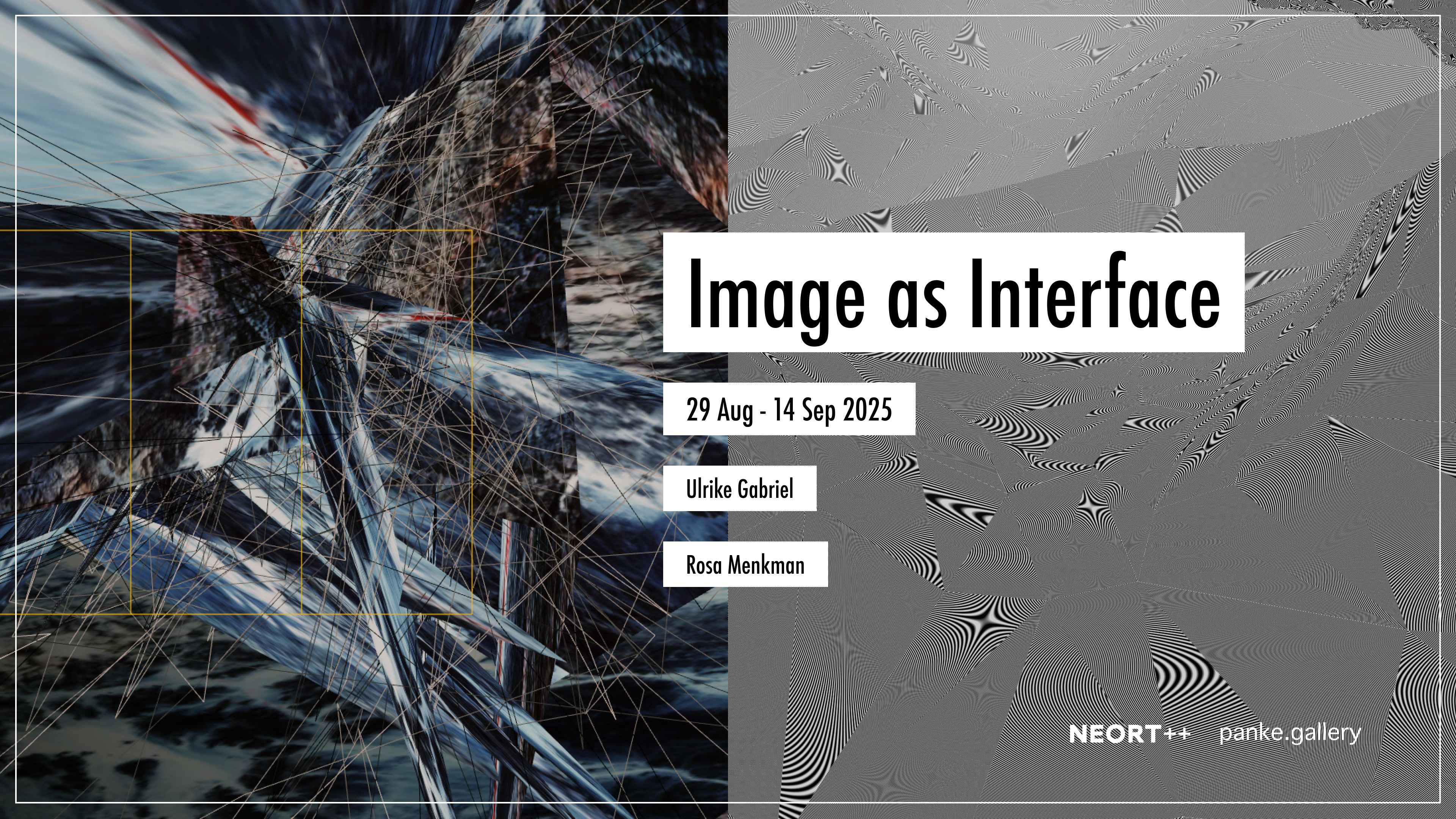
It has never been easier to use images: we create them instantly with our phones, search for them online, or generate them with AI. A constant stream pours across our screens, and we navigate it daily, often without pause or reflection, yet the saturation of our visual environment ultimately forces us to reconsider basic questions about the image: What is an image? Where are its limits?
Image as Interface presents two works that approach these questions in distinct ways. Here, images function not only as visual representations, but as interfaces for thought—spaces where seeing becomes a form of inquiry. Both artists push the image beyond its conventional role, testing how it can become a tool for perception, interaction, and reflection.
In her interactive work Perceptual Arena (1993), Ulrike Gabriel introduces a method of exploration beyond objects, presenting images generated from participants’ movements and gaze within a virtual space. Wearing a VR helmet and sensor glove, the participant shapes an evolving 3D environment, while projection relays its outcome. The resulting images are traces of a visual experience in which seeing and making merge.
Rosa Menkman’s BLOB of im/possible images (2021), presents a 3D topology of the limits of the image, visualizing both the possibilities and constraints of the image render pipeline, informed by her research at CERN into the edges of the seeable, and the un-renderable.
The exhibition is presented as an international collaboration between NEORT++ in Tokyo and panke.gallery in Berlin.
Statement
We are living at the end of the Iconic Turn. We constantly disseminate, produce, generate, and receive images. It is a time in which events are even produced specifically for images, that are then disseminated and processed into new images.
The dissemination and reception of the digital image seems more important than its production.
It has never been so easy to produce a digital image.
No longer is the visual experience in the physical world transformed by the hand onto the surface, holding up a flat mirror for reflection as it dances away from the subject. The spell cast by depicting and tracing one's own shadow gave the individual a feeling of power over their own existence.
Today, it is the prompt for the LLM, it is the transfer of the lyrical, the poetic, the text, the thought, the concept, the code into image form, revealing a moment of power that has long been hidden in the text and especially in its performative form, the code as law or software.
Moving forward, backward, away from, and toward the easel or drawing board always gave painting a performative quality in the production of images. A magical dance that culminated in the trance-like pirouettes of Jackson Pollock. The magic of the entire movement of the body, especially the hands, is lost in coding. It is completely replaced by the feeling of omnipotence that arises in creation when the software executes the commands of its creator, i.e., performs. It is the software that performs, not the human being.
The programmer, or prompt engineer, can be understood as the Odysseus of dialectical enlightenment—he is capable of perceiving the most artful songs of the sirens, but he cannot respond to them because his body is chained to the mast. He sits almost lifelessly in front of his screen and must tirelessly prove that he is not a bot. This is then also the last remaining perception of his own being, since all other certainties blur in endless variations of everything ever thought, in the network with its billions of nodes.
Visual experiences in the world are no longer processed in order to take a position in the world, but concepts are (further) processed in order to contextualize oneself in the network, to determine relationships.
But even the last answer to the question “Are you human?” will soon fade away as a faint echo in uncertainty, because only bots will be real for bots.
Never before has it been so inevitable to take pictures. The endless floods that extend to every pocket device and are always at hand and before our eyes. They want to be scanned, interpreted, understood, and, especially today, read.
To tap into the power and beauty of the symbol, it took not only training and a trained eye, but also time to identify the symbol as such and classify it in a possible order that allowed for interpretation.
Today, image reception has mutated into image consumption; there is no longer any time for the performative scanning of the image surface—the reading of individual symbols, the diverse relationships between color, surface, and object. Under the conditions of attention economies, more and more text and conventional forms are being inscribed into images until they condense into so-called memes that can be grasped and devoured in an instant.
The works of the two artists exhibited here are quite different from that.
In her work, Ulrike Gabriel constructs a dynamic visual world by tracing the viewer's gaze with bundles of endless rays, which then create an image space out of nothing from the viewer's perspective, which the artist fills with textures from technical images (satellite images), thus transforming the non-space into a fully immersive 3D space. In doing so, she modifies the senses of sight and touch by means of the helmet and glove she has constructed. The visual experience and manual perception become the paradigms that make the visual world of the perceptual arena possible in the first place.
This work magnificently reflects the fundamental concept of technical images, which can only be generated from the performance of our perception and in interaction with the hardware and software that connects intimately with our bodies. Construction, reflection, perception, and cognition converge here in a single process for the user.
Perceptual Arena does not consist solely of the introspective perceptual aspect, but rather turns it outward and curves it into an arena, allowing other visitors to follow and observe the individual's image and world construction as a projection. Equipped with a helmet and gloves, the viewer/constructor thus became the classic user as early as 1992. The user who applies the software and does not merely use it. This fully equipped user already resembles today's content creator, while the outside observer still feels safe until they themselves have to enter the arena.
Rosa Menkman’s work The BLOB of im/possible images (in which BLOB stands for Binary Large OBject), asks where images become unrenderable. During her Arts at CERN residency, Menkman asked scientists to describe an “impossible” image, considering the limits of resolution, signal-to-noise, time, energy, cost, and hard physical limits. She abstracted recurring categories of impossibility and installed them inside the navigable, 3D, environment she named the BLOB.
The BLOB appears as a subtly interference-like texture, recalling Newton’s rings and moiré, cut by axes that model the trade-offs that govern imaging and the losses each render entails: every parameter that clarifies one feature occludes another. The BLOB is both catalogue and model: a collection of stated impossibilities and a toolkit for thinking through why images fail, are compromised, or are ruled out by physics. It reframes the “impossible image” not as a failure of imagination but as the outcome of stacked or coupled parameters and material limits, inviting viewers to explore the structure of those limits rather than look past them.
The flood of generated images presents an opportunity similar to that which painting experienced with the advent of photography, allowing it to reflect on its foundations. Today, it is possible to ask once again what an image is and what an image can achieve.
This exhibition features two artists who share not only an interest in exploring the limits of what is possible in an image. The exhibition also aims to convey the aesthetic similarities between their two approaches. For example, the graphic forms of the rays that cut through the pictorial space, dividing it up and at the same time constructing it.
The use of technical textures that fill and dynamize the pictorial space. Both artists also support the use of the hand, with the mouse or the VR glove, to navigate the pictorial space and truly unfold it.
Both artists develop a dynamic digital image space whose significance transcends the examination of its technical conditions and enables an aesthetic experience that provides insight into our times.
Text by Sakrowski
Artists
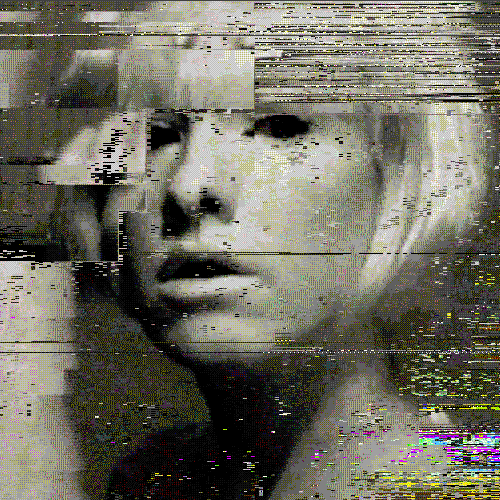
Rosa Menkman
Rosa Menkman is a Dutch artist and researcher of resolutions. Her work focuses on noise artifacts resulting from accidents in both analog and digital media.
The journey of her protagonist, the Angel of History—inspired by Paul Klee’s 1920 monoprint, Angelus Novus, and conceptualized by Walter Benjamin in 1940—functions as a foundational framework for her explorations of image processing technologies. As the machines upgrade, the Angel finds herself caught in the ripple of their distortions, unable to render the world around her.
Complementing her practice, she published Glitch Moment/um (INC, 2011), a book on the exploitation and popularization of glitch artifacts. She further explored the politics of image processing in Beyond Resolution (i.R.D., 2020). In this book, Rosa describes how the standardization of resolutions promotes efficiency, order, and functionality, but also involves compromises, resulting in the obfuscation of alternative ways of rendering.
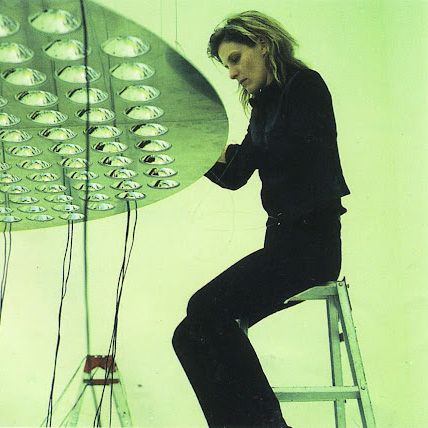
Ulrike Gabriel
Ulrike Gabriel is artist, programmer, curator focussing on generative systems. Her work includes VR environments, robotics, installations, collective online spaces, community projects, lyric machines, performative live formats, gaming and painting. She contributed to the development of an aesthetics of generative art and sortware art. She has developed complex systems that use breathing, viewing and thinking as implicit interface. Currently she dives into NI versus AI in musical improvisation and is involved in the creation of paredverde.gallery as a planetarian production space for ambiental agency. She was head of the teaching area of electronic media at the University of Art and Design Offenbach and ecological farmer in Argentina.
Curator
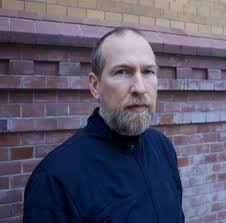
Sakrowski
Robert Sakrowski holds a master‘s degree in art history and works as a curator in Berlin. From 1999 – 2003 he curated and organized exhibitions and lectures on net art as part of the netart-datenbank.org project. From 2007 to 2009 he worked as a researcher on the Netzpioniere 1.0 research project at the Ludwig Boltzmann InstituteMedia.Art.Research in Linz. Since 2007, under the name CuratingYouTube.net, he has been working intensively with the web.video phenomena and, with gridr.org (2012), he provides an online tool specially designed for this purpose. In 2014/15 he worked for the transmediale festival 2015 capture all as curator. Since October 2016, he has managed and curated the panke.gallery in Berlin-Wedding. He is a founding member (2019) of the Center for Net Art. In 2022 he opened with the Center for Net Art and panke. gallery the project space /rosa in Berlin Mitte. In 2021 he developed the web platform openAR (2021) for he presentation and curation of web-based augmented reality objects.
Events
- ended2025.9.1 09:30 _ 2025.9.1 10:45
Talk with Ulrike Gabriel, 四方幸子
四方幸子 / Ulrike GabrielOn Site | YouTube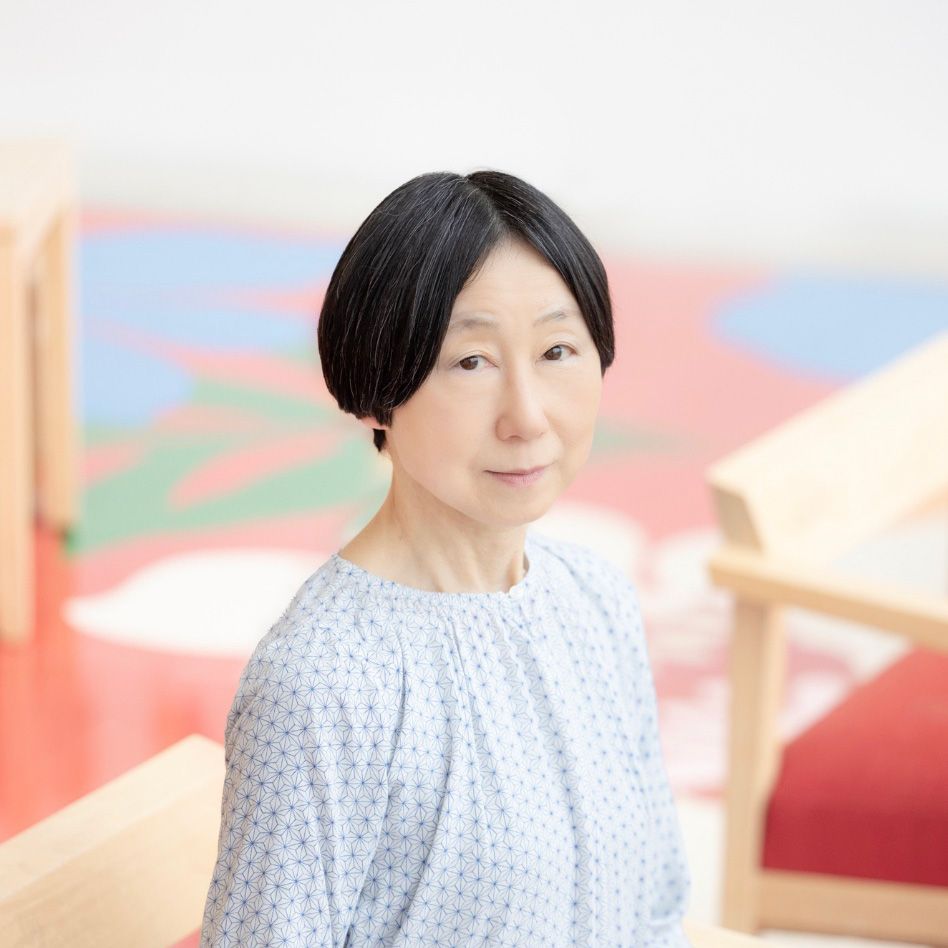
Photo: 小山田邦哉
四方幸子
十和田市現代美術館館長、美術評論家連盟会長、「対話と創造の森」アーティスティックディレクター。多摩美術大学・東京造形大学客員教授、武蔵野美術大学・情報科学芸術大学院大学(IAMAS)・京都芸術大学非常勤講師。「情報フロー」というアプローチから諸領域を横断する活動を展開。1990年代よりキヤノン・アートラボ)、森美術館、NTT ICC(いずれもキュレーター)と並行し、インディペンデントで先進的な展覧会やプロジェクトを多く実現。国内外の審査員を歴任。著書に『エコゾフィック・アート 自然・精神・社会をつなぐアート論』(2023)、共著多数。 http://yukikoshikata.com
Ulrike Gabriel
Ulrike is an artist, programmer, and curator focusing on generative systems. Her works include VR environments, robotics, installations, collective online spaces, community projects, poetic machines, performative live formats, gaming, and painting. She has contributed to the development of the aesthetics of generative art and software art. She develops complex systems that use breathing, vision, and thought as implicit interfaces. Currently, she explores NI (Natural Intelligence) versus AI (Artificial Intelligence) in musical improvisation and is involved in founding paredverde.gallery as a planetary production space for environmental agency. She serves as head of Electronic Media at the Offenbach University of Art and Design and has also engaged in ecological agriculture in Argentina. - ended2025.9.1 11:00 _ 2025.9.1 12:15
Talk with Rosa Menkman, Sakrowski
Rosa Menkman / SakrowskiOn Site | YouTube
Rosa Menkman
Rosa focuses on "glitches" in analog and digital media, as well as artifacts such as encoding and feedback. Glitches and noise are regarded as hidden possibilities obscured behind today’s standardization and protocolization. With experience as an artist-in-residence at CERN (European Organization for Nuclear Research), the artist has been developing a taxonomy of images that are difficult to generate with current technology in The BLOB of Im/Possible Images.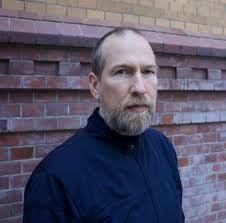
Sakrowski
Robert Sakrowski holds a master‘s degree in art history and works as a curator in Berlin. From 1999 – 2003 he curated and organized exhibitions and lectures on net art as part of the netart-datenbank.org project. From 2007 to 2009 he worked as a researcher on the Netzpioniere 1.0 research project at the Ludwig Boltzmann InstituteMedia.Art.Research in Linz. Since 2007, under the name CuratingYouTube.net, he has been working intensively with the web.video phenomena and, with gridr.org (2012), he provides an online tool specially designed for this purpose. In 2014/15 he worked for the transmediale festival 2015 capture all as curator. Since October 2016, he has managed and curated the panke.gallery in Berlin-Wedding. He is a founding member (2019) of the Center for Net Art. In 2022 he opened with the Center for Net Art and panke. gallery the project space /rosa in Berlin Mitte. In 2021 he developed the web platform openAR (2021) for he presentation and curation of web-based augmented reality objects.
